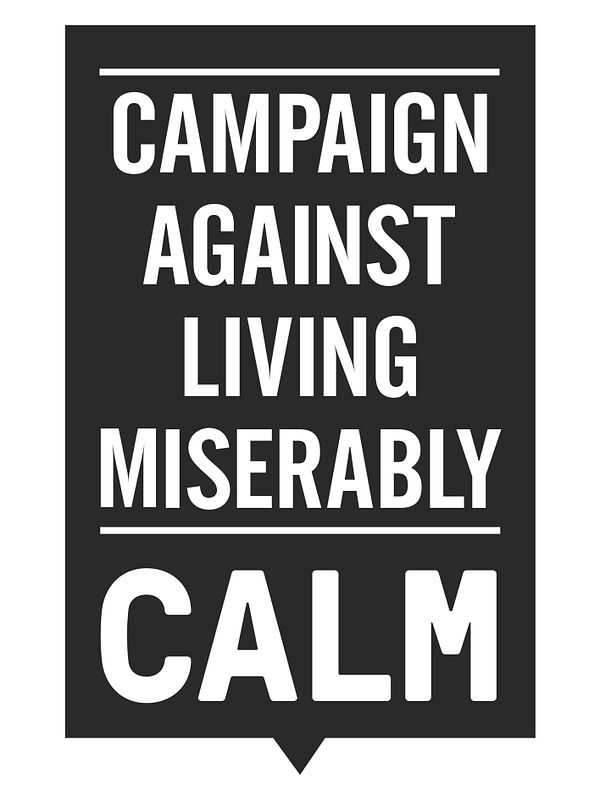News -
Male Suicides in England and Wales Hit 15-Year High
Now Single Biggest Killer of Men Aged Under 45, Male Suicides in England and Wales Hit 15-Year High - Department of Health must finally recognise the enormity of gender problem as ratio of male to female deaths shows sustained rise over 30 years
Responding to the suicide statistics released today by the Office for National Statistics*, CALM, the charity dedicated to preventing male suicide in the UK, call upon the government to finally take action to comprehensively tackle what is now the UK’s single biggest killer of men aged under 45.
Suicide statistics for England and Wales, show not just a record number of self-inflicted male deaths in 2013, but also an increasingly marked divergence between the ratio of male to female suicides; almost 80 per cent of all such deaths in England and Wales were male. The statistics show
· The highest total number of suicides since 2000, with 5,140 suicides recorded in England and Wales
· The highest number of male suicides since 1998
· The overwhelming majority of all suicides (78%) were male (4,020).
· There were 4 male suicides for every female suicide in the 15-34 age group.
· The pattern of rising numbers of increasingly older men taking their lives continued in 2013.
· The ratio of male to female suicide shows a sustained rise over the last 30 years. In 1981 men accounted for 62 per cent of suicides, this rose to 70 per cent by 1988, 75 per cent by 1995, and 77 per cent in 2012, to 78 per cent last year.
· The ratio of male to female suicide is disproportionate regardless of which age group is examined.
In view of these alarming trends CALM wants the Department of Health finally to recognise the enormity of the problem facing men in particular, and develop a gendered and strategic approach to reducing all male suicide in the UK. Jane Powell, CEO of CALM, says: “It makes no sense, as is currently the case, for the government to simply encourage the prevention of ‘older male suicide’, when we see that men of any age are between two, three and five times more likely to take their lives than women.
The research is clear. Across the board, men behave differently to women when depressed, for instance are likely to end up on a drunken binge and being arrested rather than seeing a GP about their emotional problems. And yet there is no strategy to specifically reach out to men, even when we see that gender plays such a significant part in risk of suicide“
Yet CALM rebuts any suggestion that men ‘simply won’t seek help’. In the past year CALM has received over 41,000 calls to our helpline, 80 per cent of which were men, of every age and background.
CALM, a charity with less than £1 million annual turnover, continues to struggle to respond to demand from men using its helpline.
Powell emphasises: “Immediately, CALM needs help taking more calls, so that we can prevent more suicides. But in the end this problem can only be resolved culturally, when we as a society allow and encourage men to talk about the issues which affect them. The Department of Health can play a huge part here by acknowledging the crucial role gender plays in suicide and factoring this into its strategy.”
*Reference:
For CALM formatted tables showing key stats regarding suicide figures stated in this article, you can download PDFs here:
Mortality stats deaths registered in England & Wales 2013 with CALM calculations
Suicides in the UK 1981-2013 (ONS Table 7) updated and Formatted by CALM
For full stats tables and raw data:
Tables for 1981-2012 stats; see table 7
Topics
- Mental Health
Categories
- calm
- campaign against living miserably
- department of health
- male suicide
- suicide
